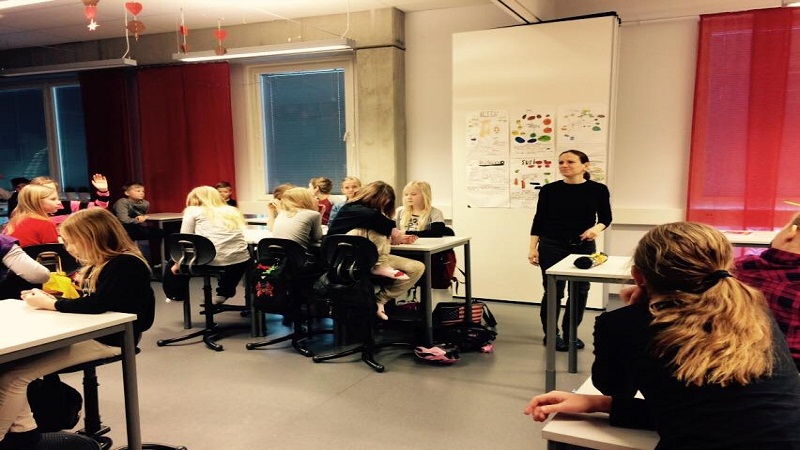Despite the visual media we currently have, such as television, mobile phones, computers, or tablets, traditional reading is still an important and necessary skill. Be it textbooks, magazines, or regular books, people still read, although not as much as before.
We think that one reason why many people read little is that they do not read well. For them, reading is slow, hard work, and they do not remember as much as they would like.
How to study and remember what you read?
Remember what they read, and without a doubt, television, telephones, and the Web are the main contributors to this problem. It is apparently going to get worse if We do not emphasize and improve the quality of reading instruction, all coupled with the fact that young people are too lazy to start reading to learn.
For all those who lost themselves in good reading skills, it is not too late, and for others, we hope that neither.

1) Read with a purpose
Having a purpose for reading and thinking about how we are fulfilling that purpose is necessary since the continuous verification of how the objective is being fulfilled helps the reader to remain in his task. Focus on the most relevant parts of the text. Simply sometimes it would be enough to ask yourself, why am I reading this? If it is to entertain me or spend time, then there is not much problem. There are many other reasons, which do require memory, such as these: to understand the thinking of a certain group of people, to form my own political opinion, to know how to develop a job, to learn a subject within an academic course, etc.
Also, if the learning order is not mutually appropriate and comes from outside, we will have to ask ourselves: Why do I have to learn this?
2) Analyze first
Depending on the first point (the purpose), it is good to mark the reading speeds and carefully and especially read the parts that contribute to the fulfillment of the reading purposes.
We consider that when the material has to be studied carefully, we must:
- Orient thinking to purpose, which helps to know where the important content is in the document,
- Help the memory by repeating the reading again, since it is easier to remember when we read a second time,
- Create and maintain a general or gestalt sense for the document, which makes it easier to remember certain details.
We know that Internet browsing ordinarily encourages people to read because the content is handled more easily on the Web with numbered lists, with bullet points, sidebars, graphics, text boxes, and sidebars. The bad news is that Web style makes it harder to learn to read in-depth. That is, the Web teaches us to read with little criteria, creating bad reading habits if what we want is to read in-depth.
3) Maintain correct mechanics
For in-depth reading, the eyes must move in a disciplined manner. The eyes must be locked from left to right and focused in a sequence. There are improvement reading machines that enable the eyes to focus properly, but few people use them, with these types of machines that can increase the reading speed remarkably without understanding the cost. Since to remember what is read, we must think about what the words we remember mean, among the key tactics for good reading mechanics. We consider the following:
- Make good eye contact with the text.
- See and focus several words on each look.
- Thrive to expand the width of each eye fixation.
- Fit the eyes from one fixing point to another (better, if the entire line can be seen with a look).
4) Be prudent in highlighting and taking notes
We will use a marker to mark some key points that act as the basis for mental images, or we also use the warning signs or write keywords in the margins if we do not find useful clues to highlight.
Almost all students use fluorescent markers to identify the main parts of a text. But many either highlight too much or highlight wrong things and, very importantly, “they are so absorbed in the marking that they do not pay enough attention to what they are reading.” A better approach is to highlight only a few keywords on a page. If many pages do not require any highlighting, adhesive tabs on pages can greatly accelerate a study or analysis process for entire books.
The highlighted text needs to be remembered in the context as it integrates and how it fits with the text that preceded it. Making outline notes after the first reading can be an important essay aid to form immediate memory and for further study. The act of creating a scheme as working memory, and the verification that it really goes with the content you just read supports the formation of memories in a very powerful way.
5) Think of images
A picture is worth a thousand words, but it can capture the essence of many. In addition, images are much easier to memorize than words. Ordinary readers can use with good results the practice of making mental images of the meaning of the text. The keywords highlighted in the text, for example, if used as a starting point for mental images become very useful for memorization. One only has to detect the keywords and think of possible associated mental images and group them into similar sets or, better, when chaining them together to tell a story.
Mental images are not the only way to facilitate the memory of what you read. The actors use another method to memorize the dialogues, “get into them” and study the meaning of the sequence in depth. Thus, when a script is memorized with mental images, it seems that the text is being viewed from the outside, as something to be memorized. When the actors memorize it, they seem to be looking for the same text from the inside, as something to be experienced.
Both approaches require commitment. The reader has to think very well what is read, and that is what helps to remember.
6) Rehearse as you go
It is good to read in short fragments of a raised size as we see the density of the content and all the time thinking and paraphrasing the meaning of what is written.
Try to rehearse what you are memorizing, see how many of the mental images can be reconstructed, using highlighted titles and words if necessary to help reinforce those mental images.
It is very useful to ask questions about the content of the type: How does this information fit what I already know or don’t know? Why does the author say that? I understand what this means? What or where is the evidence of the meaning? Do I agree with the ideas or conclusions? And why or why not? What is the practical application of all this? How much of this do I have to memorize? Consequently, in this way, we will generate all kinds of ideas about the content.
It is also very helpful to focus on what is not said because for that it is necessary to have what was said in the working memory since this not only helps your memory but also gives you the opportunity to obtain and provide a Creative vision on the subject. In short, thinking will promote not only the formation of memory but also understanding.
7) Run your concentration ability
Paying maximum attention is essential for memorization, and since most people have or have the little attention span, you should not try to read dense material for more than 10 or 15 minutes at a time. It is also advisable that we always take a break after a reading session to ask ourselves about what we have just read.
Over time we can already discipline our attention so that we get the concentration for longer periods of time.
8) Try what you learned soon
At the end of the reading session, we must rehearse what was learned immediately.
It is necessary to avoid distractions and multitasking because they interfere with long-term memory consolidation processes; Answering, again and again, questions about the mentioned content is a priority.
We will think and rehearse what we read at least twice later that day and even 2 or 3 days later. ” Rehearse as you go .”
This time we have a shot at the number of words. I promise to return to the usual basics of this blog in the following texts.
Dear friends, enjoy!
Ah! and you can click on the bottom right heart if you liked it and why not, send it through your social networks. 😉







